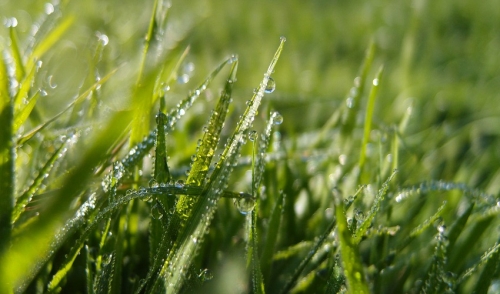
How To Fix Dead Patches In The Lawn
A dead patch in the lawn is something that plagues every homeowner at some point and time. Dead patches can be tough to avoid as sometimes it really just comes down to the weather and other underlying issues that you cannot control such as water restrictions and root infections. For some homeowners, they occur every year in different areas of the lawn. For others, it’s just a huge dead spot where green grass used to thrive. Lucky for all of us, fixing the problem is pretty easy to do. Follow this article on how to fix dead patches in your lawn.
Start by cleaning out any dead grass, thatch, matted turf, or debris from the area. When repairing the dead patch, a clean surface is the best for germinating new grass when it comes into contact with the soil. For even better results, try clearing out more than just the damaged spot to increase your yield and to decrease the chances of other fungal diseases or underlying issue from resurfacing. You can do this by enlarging the area six inches beyond the damaged area and clearing it out. Not only should you try to get a bit wider in your preparation, you should also aim to turn the soil and area over about 6 inches deep as well. You want to make sure there aren’t any bad roots or large stones that may be harmful to your lawn. Add some compost or manure to the area and mix it in well. If you do not have compost or manure, pick up some starter soil from your local hardware to get you going. Once finished, rake and spread the soil evenly across the damaged area.
The next step is to sow grass seed across the damaged area. Grab good quality seed from the hardware store and scatter them across the patch. Cover them up gently with your hands or a rake and lightly packed the soil down. Don’t forget to add a little fertilizer to help spark new growth and add nutrients to the soil. Since it’s getting warmer, I recommend using a weed free mulch to cover the area from the harshness of the sun. Some good mulch options for this situation include dry grass clippings, straw, or even a light layer of sand. Be careful not to use too much as it can damage the area and prevent growth. You want just enough mulch to provide protection and to prevent excessive evaporation of moisture from the sun.
If you prefer not to use seed, another good option is using sod. Grab some sod from your nearby landscape shop and cut it to fit the size and shape of the patch. Make sure to lay it down so that the elevation is even with the rest of your lawn or your mower could scalp it. Another way you can streamline the dead patch recovery process is by using products that kill two birds with one stone such as grass seed accelerators that can incorporate mulch and fertilizer into one.
The final step is to water the patch frequently. Depending on how hot it is outside, you may want to water twice daily until the grass reaches about four inches in height in which you can begin to mow that area with the rest of your lawn. Be sure to keep the area as moist as possible the first couple of weeks so that the area can thrive. Follow these simple steps and tips to fix dead patches in your lawn. With new grass and enough water, that eye sore in your lawn will be gone in no time.

